Resources for research methods in psychology
07 September 2023
Cat van Saarloos, Advanced Maths Support Programme National Coordinator

In this blog I’ll introduce you to some free resources that will bring the teaching of research methods to life. I’ll also give you the opportunity to find out about Level 3 Core Maths and why your students should be encouraged to take it alongside A Level Psychology.
Teaching research methods
Many students and teachers have a sense of dread when it comes to the mathematical requirements of A Level Psychology. Teachers are often tempted to teach research methods as a standalone topic but embedding the content throughout the course can lead to much more positive experiences and outcomes.
The Association for the Teaching of Psychology (ATP) has been working with The Advanced Maths Support Programme (AMSP) to create resources and run professional development courses on the maths in psychology.
“I have been using the resources to teach stats and they have been amazing; the students are really enjoying them too.”
Participant in 2022-23 Maths for Psychology course
Introduction to analysing statistics using Desmos graphing calculator
Firstly, I’ll show you how to use Desmos graphing calculator to calculate descriptive statistics from a list of data. After you have gathered data, you can do this live in the lesson.
- Go to desmos.com and select ‘Graphing Calculator’.
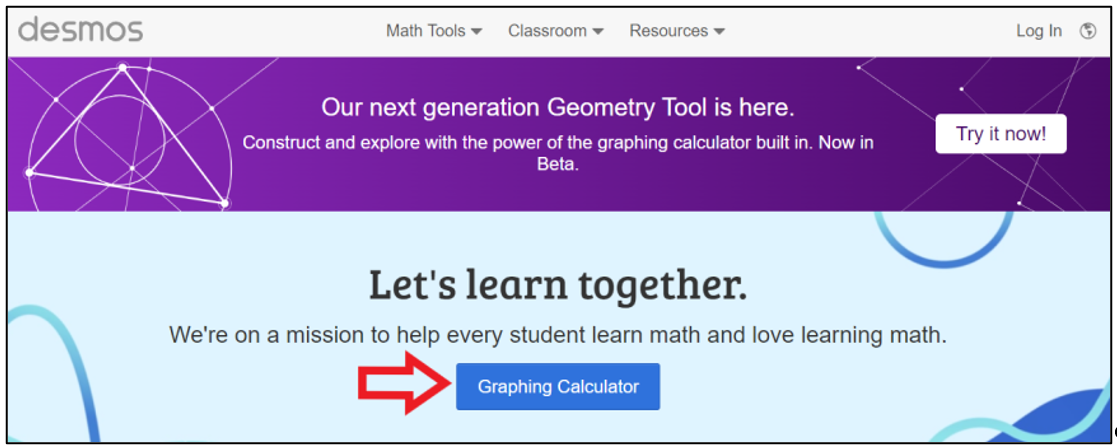
- You can enter data into the rows on the left. For example, I asked my 18 students how many minutes it took them to complete a task. When entering the data, you must use a letter (I used T) followed by ‘=’ then add a square bracket. After each student told me their time I typed it, added a comma before entering the next one.

- To see the distribution of the data you can draw a histogram. Go to row 2 and type histogram(T). Note that you must use the same letter here that you used in row 1.
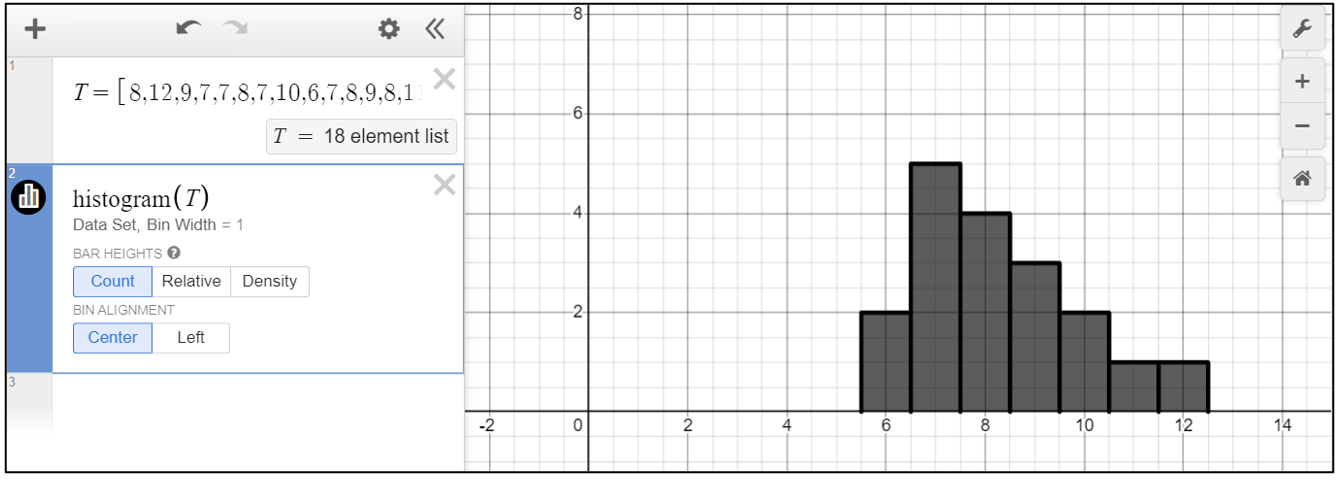
You can change the colour of the graph by holding down on the graph icon in row 2.
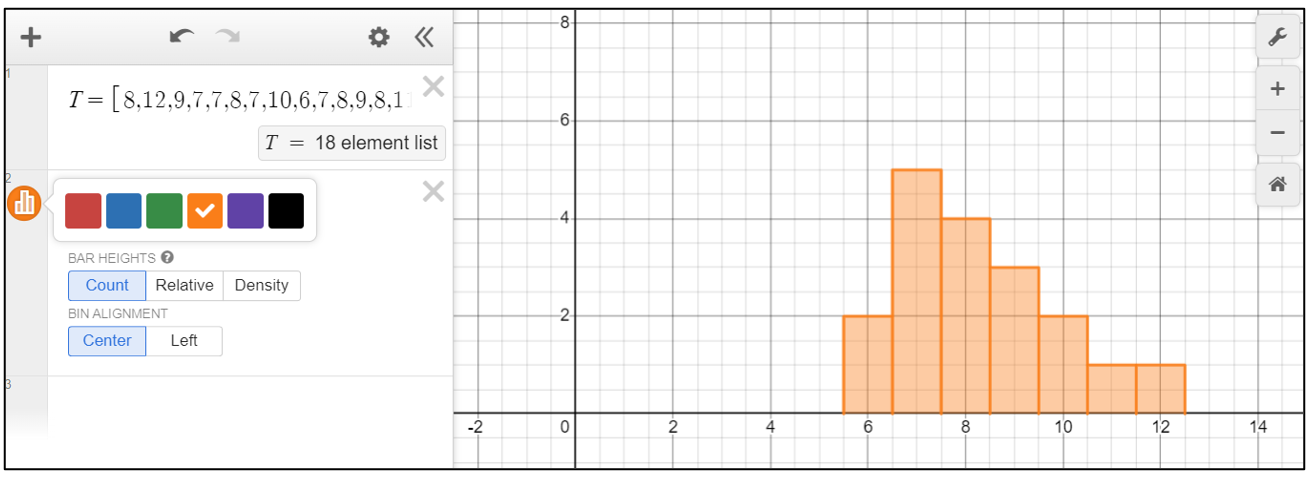
- At this point I might ask my students what they notice about the distribution of times. They may say things like: “it’s not symmetrical” “there are a couple of higher times” or if you have covered this already “it is positively skewed”. I might also ask them what they anticipate the mean and the median to be. Over time students will see that for positively skewed distributions the mean will be higher than the median.
To calculate the mean and the median, type mean(T) in row 3 and median(T) in row 4.
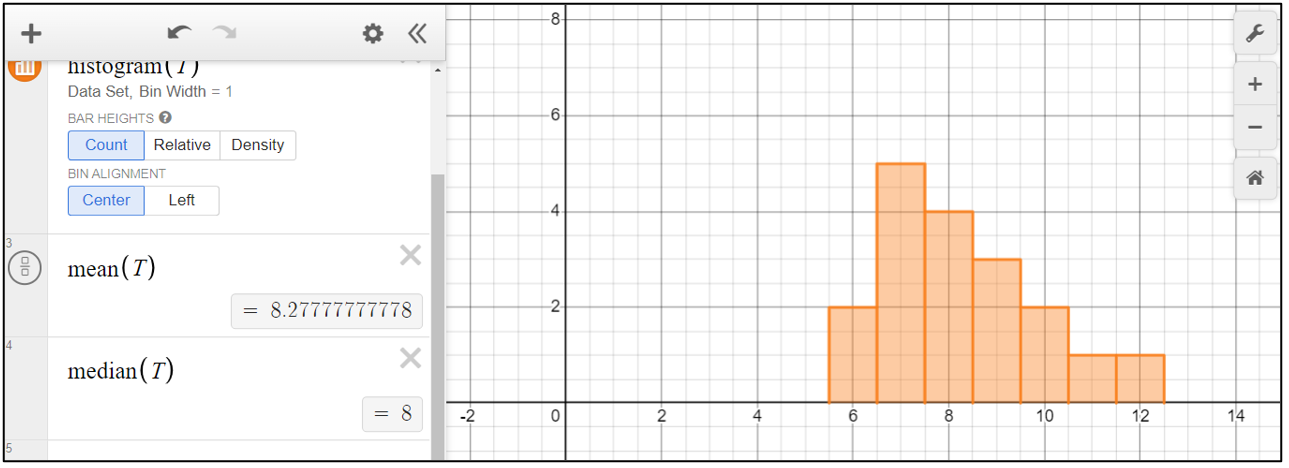
- You can also calculate standard deviation by typing stdev(T) into row 5.
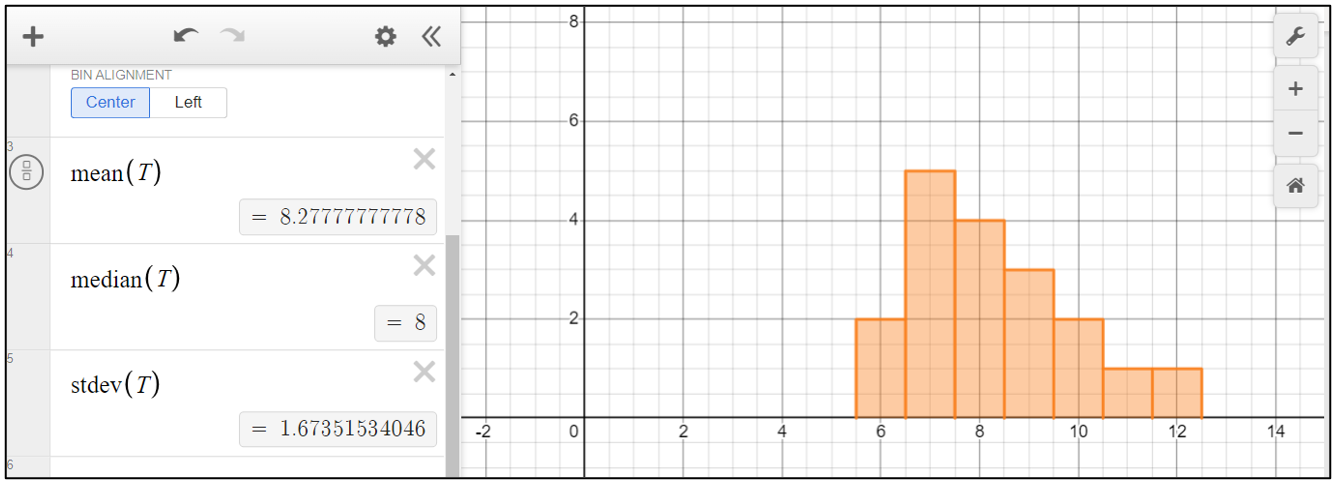
- After this, I may ask my class to complete the same task under different conditions and use the measures of central tendency and dispersion to compare.
It is also very easy to enter tables and scatter graphs and you will find many more functions to analyse data by clicking on this icon at the bottom left-hand side of the page:

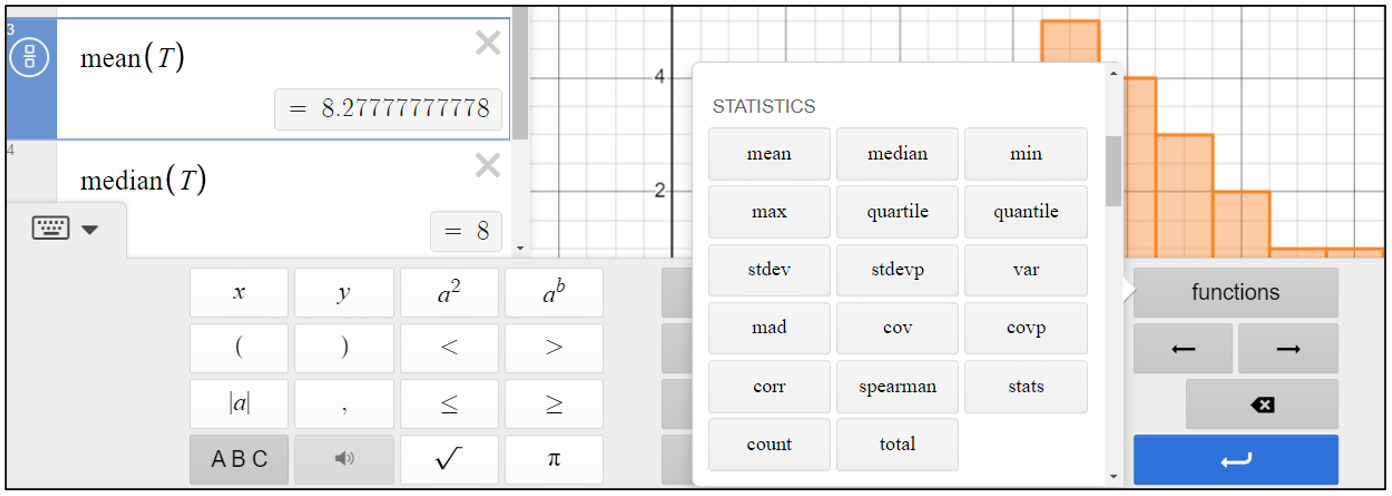
Using our pre-prepared Desmos classroom activities
We’ve created a growing collection of activities for the teaching of maths in A Level Psychology.

This 10-minute video will give you an overview of the activities available and how to set and pace them for your students.
In our Maths for teachers of A Level Psychology course, starting on 3 October, you will get an opportunity to try out these activities and gain confidence in using Desmos. The eight-week online course is free for teachers in state funded schools and colleges in England. The cost to other participants is £195.
In addition, you can get hands-on support at our Maths for Biology, Geography and Psychology Conference on Friday 17 November in London.
Why study core maths?
Core maths is equivalent to an AS and is usually studied by students as an extra alongside their main subjects. It aims to enable students who have attained at least a grade 4 at GCSE to confidently tackle the kinds of mathematical problems that they are likely to encounter in their other subjects or in their future lives. It includes personal finance and critically analysing statistics in media headlines.
Studying core maths alongside psychology helps to instil and reinforce the maths met in A Level Psychology. It complements its key mathematical requirements of selecting appropriate statistical techniques, interpreting, and exploring data, and using diagrams and calculations.
Students may also be eligible for lower offers from university if they achieve a certain grade in core maths.
You can read more about core maths for psychology in this blog by OCR’s Maths Subject Advisor, Ruth Wroe.
If you would like help setting up or strengthening core maths in your school or college, please get in touch with your local AMSP area coordinator or request bespoke support from a core maths Specialist Lead.
If you have any questions, please don’t hesitate to get in touch: catherine.vansaarloos@mei.org.uk
Stay connected
Share your thoughts in the comments below. If you have any questions, you can email us at psychology@ocr.org.uk, call us on 01223 553998 or tweet us @ocr_psychology. You can also sign up to subject updates to keep up-to-date with the latest news, updates and resources.
About the author
Cat van Saarloos joined MEI, a maths education charity, in 2018. Before this, she spent 13 years teaching and leading in schools and Further Education. Her work involves delivering courses on maths in A Level Psychology, Level 3 Core Maths and creating engaging classroom resources. These have been very well received and widely used. Cat is passionate about making maths accessible and enjoyable and helping students see its relevance. Outside of work, Cat is a laughter yoga leader and helps organise community micro funding events in Liverpool.
Related blogs